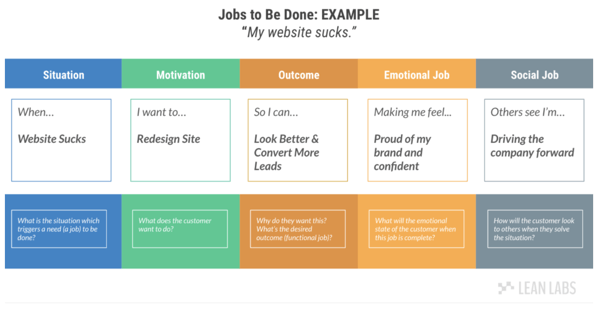
Best Sales Enablement Tools [According to the Experts]
July 10, 2020
By Ale Melara
Your sales team works under a lot of pressure to close deals and hit their established quota. How can you, as a leader, ensure that they are successfully converting those leads into customers?
It is one of your duties to set sales up for success, and you can do that by providing them with the right resources and tools to win more deals. Help them work smarter, not harder!
This is where choosing the best sales enablement tools becomes critical.
We have compiled a list of some of the best sales enablement tools out there, describing how some of the top sales experts use them to support their sales teams and processes, but before we dive in, let’s define sales enablement and how it can help you.
Sales enablement is the act of preparing your sales team to close more deals. You do this by providing them with different resources, materials, and tools, which can be platforms like Engagio, Outreach.io or SalesLoft, or actual tools like a sales playbook or a sales battlecard.
We reached out to a number of sales and sales enablement experts to find out what tools they use to bridge the gap between sales and marketing. Here are some of the tools they recommend:
The Best Sales Enablement Tools, According to the Experts
1. Lead Qualification Matrix
A lead qualification matrix will enable you to determine if a lead is a good fit or a bad fit by giving them a “sales ready” score. The first step you need to take is to determine the criteria that will tell you which lead is a good fit and which lead is a bad fit.
Once you know what makes someone a good fit for your offering and the actions that indicate they’re sales ready, combine the two to define a marketing qualified lead (MQL).
A MQL could be qualified as good, bad, ready or not ready. You can organize these four categories into a two-by-two matrix called a lead qualification matrix. The leads that marketing needs to be sending out to sales should fall in the upper left side of the quadrant.
“Every company has its own way of qualifying leads, but there are two dimensions of qualification that every company should consider.
The first is fit, which is how well a lead matches your buyer persona or ideal customer profile. The most important part of this dimension is making sure that sales and marketing agree on who is a good fit. If marketing is targeting one kind of customer, while sales is looking for someone else entirely, you're going to have problems!
The other dimension is interest, which is mostly a measurement of how engaged a lead is with your company. Someone might be a great fit, but if they aren't interested in buying, there's not a lot of reason to reach out. On the other hand, someone who doesn't match your typical profile but is showing a lot of interest might still be worth reaching out to.
By putting fit and interest in a two-by-two square, you can categorize your leads into prioritized buckets: Top priority are good-fit, high-interest leads; poor-fit, high-interest leads and good-fit, low-interest leads are somewhere in the middle; and poor-fit, low-interest leads shouldn't be on your radar at all.”–Kyle Jepson, HubSpot Academy’s Sales and CRM teacher and co-creator of the Inbound Certification course.
“Lead quality is always a big [factor], so the best thing you can do to better enable sales is get on the same page about the lead qualification process by defining marketing qualified leads (MQLs), sales qualified leads (SQLs), or sales-ready leads (SALs), as well as when the best time is to hand off leads. If you’re sending them too soon or sending the wrong leads to sales, you’re not delivering on the basics of sales enablement.”
–Amber Kemmis is the VP of Client Services at SmartBug Media. In her work with SmartBug clients (and previously as an in-house marketer), she helps organizations transform their sales and marketing teams and systems to drive company growth.
2. Smarketing Meetings
Like the name suggests, smarketing meetings are meetings where the sales and marketing teams align their efforts to achieve a common goal.
“Marketing and sales should meet together regularly to align around goals and strategies. Make the meetings as short, frequent, and productive as possible. Keep the invite list small to make sure everyone present has a chance to participate. Avoid the temptation to use these meetings to report on successes. Instead, make them working meetings, where problems are identified and addressed and everyone leaves with action items. This is a great place to update lead definitions, establish SLAs, and make plans for the future.”
–Kyle Jepson
3. Jobs to Be Done
This is a framework to identify the reasons people buy your product. The template below is based on a template by Clayton Christensen, a Harvard Business School Professor and pioneer of the ”Jobs to Be Done” theory.
“The ‘jobs to be done’ framework is a game changer for sales enablement teams. It can be a lot of work to figure out what job people hire your product to do, but it's worth the effort. By identifying the reasons people buy your product, you'll unlock opportunities to target new segments, improve customer satisfaction, outpace your competitors, and enrich your product.”
–Kyle Jepson
4. Objection Matrix
The objection matrix is usually created in a Google Sheet or Excel file. This sheet lists all of the objections your prospects might have when buying from you and provides key points for how to respond to them.
In the first column, you list all of the objections.
In the next column, you add all of the possible responses or solutions to that objection.
The third column you’ll have to list out examples and stories of past customers with similar objections.
“[An objection matrix is] something that a salesperson can refer to any time a prospect has an objection.
The last stories column often gets left out of many objection matrices but is critically important for closing more deals. If prospects hear that others had similar feelings but used the product anyway and still achieved success, they will connect themselves to that experience and be much more likely to close.”
–Matt Wolach, creator of the Perfect D.E.A.L Process, B2B SaaS Sales Coach at Xsellus, and host of the SaaS Story in the Making Podcast.
5. Video on Demand
Using a video strategy can be an effective tool to help your field overcome gaps in their sales or solutions knowledge, enabling more personalized and successful conversations with customers – whether that be at the prospecting stage or later in the sales cycle.
“I have found that VODs (videos on demand) only a few minutes in duration serve as a popular tool to address topics that the field may be struggling with. You have to be laser focused on where there are gaps and then bring in captivating speakers who can clearly articulate what the field needs to understand. Delivering these messages in short clips, that are accessible anywhere and at any time, has proven to be very successful.”
–Helen Cummins is a creative sales and marketing executive with more than two decades of experience leading sales enablement, product marketing, and enterprise sales account teams in firms like Cisco, Hewlett-Packard, and Keysight Technologies.
6. Competitive Battlecards
A sales battlecard is an internal guide that will educate and train your sales team with the best approaches to sell your software solution and gain new customers based on your competitor’s current efforts.
A sales battlecard can help your team by:
- Providing specific talking points your team can use during a sales call or along their sales process with a prospect
- Providing quick answers to sales trap questions and prospect objections on one-page sheets
- Compiling all of the specific details and information from your competitor’s business to stay ahead of the game
Check out our [Competitor] Sales Battlecard Template tailored to SaaS.
“We use battlecards. We actually just refreshed them. And that goes back to the initial conversation of understanding who you’re talking to, their challenges, what’s happening, customer stories, things like that.”
–Stacey Justice, Vice President of Sales Strategy and Sales Enablement at Workfront.
7. Automation (Slack Bots)
Technology enables salespeople to be more effective. Implementing automation in your sales approach will save your team time and money. Check out what Stacey and her team did to automate their battlecard:
“We just implemented a Slack bot that provides instant information from our competitors. If you think about it, the time frame for getting back to people is changing in this new world and you need things at your fingertips. Our Slack bot automates our battlecard.”
–Stacey Justice
8. Persona- and Outcome-Based Discovery Guides
Paul Butterfield, vice president of global sales enablement at Instructure tells us:
“The sales tool or asset I think is indispensable in any playbook is a full set of persona- and outcome-based discovery guides that enable a salesperson to hold discovery meetings that are tailored toward the prospect’s role, along with the outcomes they're trying to achieve, barriers to achieving them, and cost of continuing to do business that way.
The sales rep will also help the prospect start to create a vision of how specific capabilities or usage scenarios could help them achieve those outcomes. This makes for a far better experience and more useful meeting for the prospect than asking a few discovery questions and then jumping to the demo or putting up a bunch of slides.
The reason for a full set of these prompts covering all buyer personas is that discovery is not one and done. The same type of discovery meeting needs to be held with each of the key decision makers. They will all have unique goals and perspectives. That's the only way a sales rep can really get a full 360 on the prospect’s needs and begin to build a business case for their product of service.”
9. Sales Playbook & Library of Templates and Content
Having a library of content or a playbook that includes all these available resources stored in one place provides a sort of bible for your sales team, that they can refer to whenever they need specifics on who, how, and when to sell.
“Another big tool is our sales playbook where we include specifics on who we sell to. We use a funnel perspective, where we identify the ideal target company and then divide it by vertical or by department down to the level of the person. We also provide guidance to our ‘land and expand’ framework with pitch decks and key messaging.”
–Stacey Justice
“Another common pain point is that sales is left to do outreach without valuable assets at their disposal. Often, sales is in the dark about many of the assets they could be using in their outreach, such as a guide that speaks to the prospect’s pain points. Or, more commonly, they know of the assets but don’t have them at their disposal in an organized manner that makes them useful.
Having an easily searchable library of templates and content for a rep’s most common needs, which are driven by the prospect, is one of the best valuable sales enablement tools you can provide as a marketer.”
–Amber Kemmis
Key Takeaway
If there is one thing that I took away from talking to these experts, it’s that there are hundreds of sales enablement tools and platforms out there, from battlecards to cheat sheets and video scripts. There is no right or wrong approach to using them. Just pick the one that best fits your needs and organizational goals, and start implementing them with your team.

About the author
Ale Melara is a Sr. Content Marketing Manager based out of El Salvador, Central America. Ale is our very first LATAM employee. She's worked remotely for the past 5 years and she's had different roles in sales and marketing. In her free time, she works on creating educational videos around digital marketing for her "Inbound Nomad" social accounts where she promotes traveling the world while being a full-time marketer. Read more articles by Ale Melara.

















![Sales-Enablement-Battlecard-Template-[for-SaaS-Marketers]-cover](https://www.smartbugmedia.com/hs-fs/hubfs/sales%20battlecard%20template.png?width=200&height=260&name=sales%20battlecard%20template.png)



